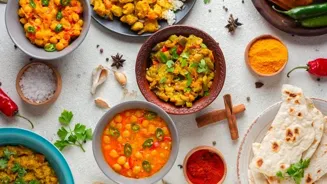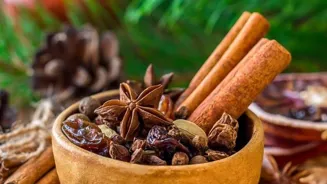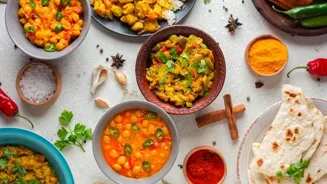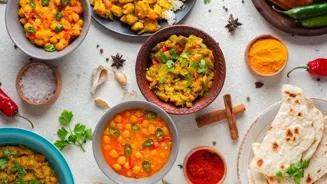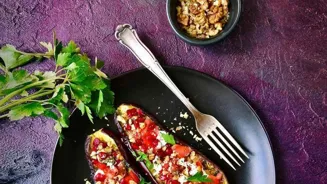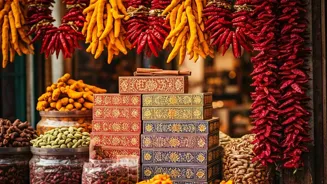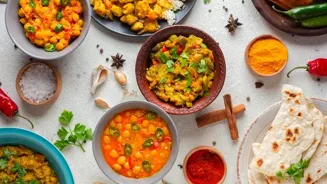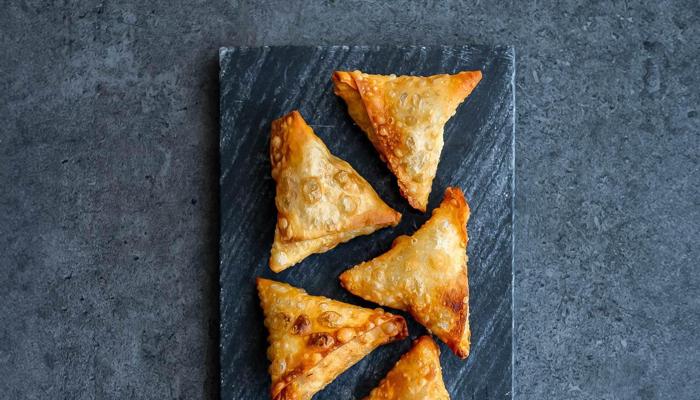Unlock the Secrets of Perfect Indian Cooking with 5 Essential Techniques. Dive into the world of flavors and aromas!
Namaste, food lovers! Are you ready to take your Indian cooking skills to the next level?
Indian cuisine, with its symphony of spices and diverse flavors, can seem intimidating at first.
But don't worry, mastering a few key techniques can make all the difference in creating delicious and authentic dishes. Today, we will explore five essential cooking techniques that will help you unlock the secrets of perfect Indian cooking, all from the comfort of your own kitchen.
Get ready to impress your family and friends with your newfound culinary prowess! Keep reading to unlock the treasures of Indian food.
Tempering spices transforms dishes, adding aroma and depth
First up is tempering, also known as "tadka" or "chhonk". This vital method involves heating oil or ghee (clarified butter) and then adding whole spices, such as cumin seeds, mustard seeds, dried red chilies, and curry leaves.
As the spices sizzle and release their fragrant oils, they are then poured over the dish being prepared. Tempering isn't just about adding flavor; it's about transforming the entire dish and is capable of awakening the senses.
The heat unlocks the essential oils in the spices, creating a powerful aroma and a depth of flavor that infuses the entire dish. Think of it as the final flourish, the artist's signature on a masterpiece. Tempering can add smoky or nutty tones, depending on the spices used.
Don't be afraid to experiment with this technique – it's a game-changer. Its so important, it will be wise for you to not under estimate or rush this process.
Bhuna: slow-cooking for rich, deep Indian curry flavor
Next, we come to bhuna, the art of slow-cooking and sautéing. This technique involves cooking ingredients, usually onions, ginger, and garlic, slowly over medium-low heat, allowing them to caramelize and develop a rich, deep flavor.
Bhuna is the foundation of many Indian curries and gravies, it's not about speed; it's about patience. As the ingredients cook, they release their natural sugars, creating a sweet and savory base that forms the backbone of the curry. The key is to stir frequently to prevent burning.
Allow the onions to turn a golden brown color, but be mindful that it doesn't turn a dark color. With practice, you will soon be able to identify the aroma that is produced at the right intervals which will bring out the true essence of Bhuna.
This method also brings the different food flavors together. Without the application of the technique, the flavours may sit on top of each other.
Dry roast whole spices to intensify flavors, avoid burning
Now, let's talk about roasting spices, a technique that intensifies their flavor profiles. Dry roasting whole spices, such as coriander seeds, cumin seeds, and peppercorns, in a pan over low heat releases their essential oils and enhances their aroma.
After roasting, the spices are typically ground into a powder, which can then be added to dishes for a more potent and complex flavor. Be careful not to burn the spices, as this will result in a bitter taste.
Use a low heat and keep an eye on the spices – you should be able to smell their fragrance intensify as they roast. Once roasted, allow the spices to cool completely before grinding them. Freshly roasted and ground spices will elevate your Indian cooking to new heights.
The different aromas produced can be intoxicating and arousing a sense of wellbeing. Play and experiment with different timings for each individual ingredient.
Master layering flavors for balanced Indian dishes
Moving on, let's discuss layering flavors, the secret to creating complex and nuanced Indian dishes. Indian cuisine is all about balance, and layering flavors is essential to achieving that harmony.
Instead of adding all the spices at once, introduce them in stages, building the flavor profile gradually. For example, you might start by sautéing onions, ginger, and garlic, then adding powdered spices like turmeric, chili powder, and coriander powder.
Later, you might add whole spices or garam masala to finish the dish. This approach allows each spice to shine and prevents the dish from becoming muddled or overpowering. It is a process of slow build like building a tall skyscraper.
Starting with a good foundation, the following levels need to match and build on each other. Get the right balance and you'll never turn back
Master the art of making perfect Indian roti for an authentic taste
The daal and roti are cornerstone of the Indian kitchen. Getting this right goes a long way to bringing the real sense of India to your kitchen. The method is to first make your dough fresh. Make sure to use hot water as you slowly mix the flour into a bowl.
As the flour absorbs the water, the texture of the dough will slowly change into a smooth material. It needs to be firm but not tough. Rest your dough for one hour. Roll out the dough with a light amount of flour and cook in a pan until warm and lightly browned.
Finish off by putting the roti over an open flame and watch the magic as it puffs up. Brush over some butter. Enjoy with your dhall
Balancing flavors in Indian cuisine for delicious dishes
Finally, we have the art of balancing flavors, which is crucial for creating harmonious and delicious Indian dishes. Indian cuisine often combines sweet, sour, salty, spicy, and bitter elements to create a well-rounded and satisfying taste experience.
Learning how to balance these flavors is essential for achieving that perfect harmony. For example, you might add a squeeze of lemon juice to a curry to brighten it up, or a pinch of sugar to balance the spice. Tasting as you go is key.
Don't be afraid to adjust the seasoning until you achieve the desired balance. The point is, you'll be experimenting with levels and intensity of contrasting and complimentary flavours that can easily stimulate the senses. Start with basic recipes and you'll quickly learn how it's done.
AI Generated Content. Glance/InMobi shall have no liability for the content